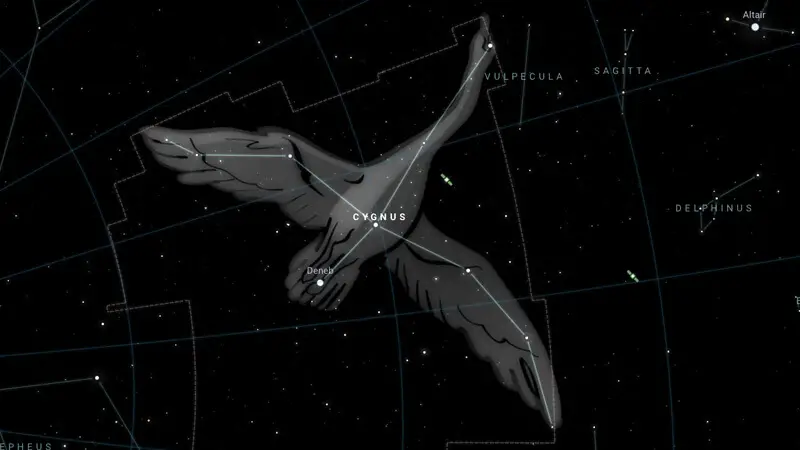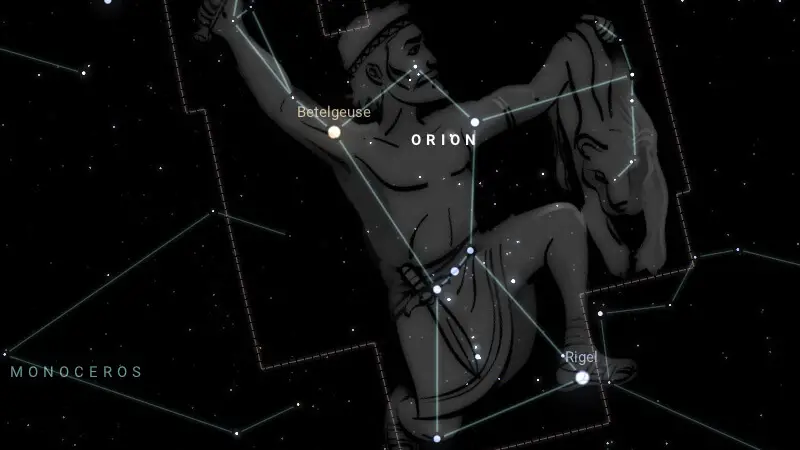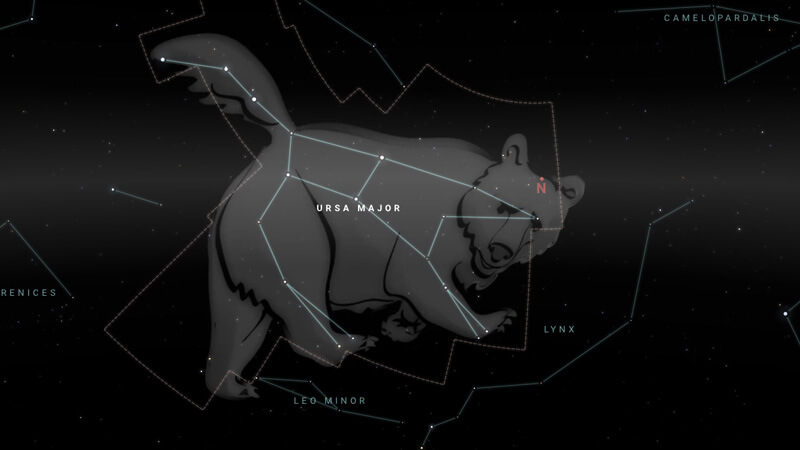Have you ever looked up at the night sky and noticed the same groupings of stars night after night? These groupings, known as constellations, have been used by humans for thousands of years to navigate the night sky and tell stories about the gods and heroes they believed in. But do constellations move, or rather, why do constellations not change?
Constellations don’t change because of the vast distances between the stars. While the stars constantly move, their movement is so slow and gradual that it is imperceptible to the human eye for a lifetime. It takes thousands of years for the positions of the stars to change enough to alter the appearance of a constellation.
In this article, you get
Importance of star patterns
The historical significance of constellations
Impact of axial precession on constellations
Perception of constellations from Earth
Definition of circumpolar constellations
Changes in star pattern shapes over time
Importance of cultural and historical context
By the end of this article, you’ll understand why constellations don’t change and much more.
Let’s dive right in.
Why Do Constellations Not Change? An Introduction
Before exploring why constellations don’t change, let’s examine their naming, identification, and cultural significance.
Naming and Identification

There are 88 officially recognized constellations, each with a unique set of stars that form a recognizable pattern. For centuries, these patterns have been used to navigate the night sky and tell stories.
The stars within a constellation are named based on their position within the pattern.
- Constellations are named after mythological creatures, animals, and objects.
- Stars within a constellation are named based on their position within the pattern.
- Constellations have been used for centuries to tell stories.
Did you know the Big Dipper isn’t a constellation? It’s true. Read my article on whether everyone on Earth can see the Big Dipper.
Cultural Significance
Constellations have played an essential role in various cultures throughout history.
In ancient Greek mythology, constellations were seen as representations of the gods and used to tell stories about their lives. It sounds like they had a lot of fun stargazing.
In other cultures, constellations were used to mark the changing seasons or predict the weather.
Today, constellations continue to be an essential part of many cultures.
- Constellations have played an important role in various cultures throughout history.
- Constellations were used to mark the changing seasons or predict the weather.
- Today, constellations continue to be an important part of many cultures.
Constellations do not change because they are made up of stars incredibly far from us.
While the stars constantly move, they are so far away that their movement is imperceptible to the human eye. Additionally, the constellations we see today are the same ones that were seen by our ancestors thousands of years ago.
The patterns formed by these stars have remained the same over time, making constellations a reliable way to navigate the night sky and tell stories. Ever wonder if all the stars we see are in the Milky Way?
In the next section, we will explore the formation of constellations and the relationship between constellations and galaxies.
Astronomical Basis

Let’s dive into the astronomical basis of why constellations do not change.
There are a few key factors to consider, including the positions of stars within constellations, Earth’s axial precession, and the concept of the celestial sphere.
Stars and Their Positions

Constellations are made up of stars, each with unique brightness and magnitude. There are different types of stars within constellations, including main sequence stars, red giants, and white dwarfs.
These stars are positioned in specific ways within the constellation, creating recognizable patterns in the night sky.
For example, in the constellation Orion, the three stars in a row that form the “belt” are all main sequence stars, while the bright star at the top left corner, Betelgeuse, is a red giant.
Earth’s Axial Precession
One of the main reasons why constellations do not change is due to Earth’s axial precession. This is the gradual shift in the orientation of Earth’s rotational axis over time, which causes the positions of stars to appear to shift in the night sky.
This means that over thousands of years, the positions of stars within constellations will change, but the overall pattern of the constellation will remain recognizable.
Pro Tip
To see the effects of axial precession, examine the constellation Ursa Major over a long period. You’ll notice the positions of the stars gradually shift.

Celestial Sphere
The celestial sphere is an imaginary sphere that surrounds Earth, with the stars on its surface. This concept is used in astronomy to map out the positions of stars and constellations.
Because the celestial sphere is fixed, the positions of stars and constellations appear to be fixed as well, even though they are moving and shifting over time due to Earth’s axial precession.
Now that we understand the astronomical factors contributing to constellation stability let’s explore the history and cultural significance of constellations in the next section.
FREE STARGAZING CHECKLIST
My 5-page Stargazing Checklist will enhance your astronomical observations.
Follow this free checklist to navigate the night sky with confidence, clarity, and a sense of preparedness for a rewarding stargazing experience.

Perception of Constellations
The perception of constellations can vary depending on your location, time of year, and even the amount of light pollution in your area.
Apparent Motion of Stars
Have you ever noticed that the stars and the milky way move across the sky throughout the night? This is due to the apparent motion of the stars, which is caused by the rotation of the Earth on its axis.
As the Earth rotates, the stars appear to move east to west in the sky. This motion is vital in astronomy because it allows us to track the movement of celestial objects and study their behavior over time.
Circumpolar and Seasonal Constellations
Some constellations are visible all year round, while others are only visible during certain seasons.
Circumpolar constellations, for example, are visible in the night sky year-round and never dip below the horizon. This is because they are near the celestial pole, the point in the sky directly above the Earth’s North Pole (and South Pole).
On the other hand, seasonal constellations are only visible during certain times of the year and can vary depending on your location.
The perception of constellations is also affected by light pollution, which is the brightening of the night sky caused by artificial light sources. In areas with high levels of light pollution, it can be challenging to see fainter stars and constellations, making it harder to appreciate the beauty of the night sky.
Understanding the apparent motion of stars and the relationship between this motion and constellations is vital in astronomy. By tracking the movement of celestial objects and studying their behavior over time, astronomers can better understand the universe and our place in it.
Some things to keep in mind regarding circumpolar and seasonal constellations, and how they are affected by the rotation of the Earth:
- The apparent motion of stars is caused by the rotation of the Earth on its axis.
- Circumpolar constellations are visible year-round and never dip below the horizon.
- Seasonal constellations are only visible during certain times of the year and can vary depending on location.
- Light pollution can make it challenging to see fainter stars and constellations. A full moon can also affect stargazing.
Now let’s dive deeper into how we perceive constellations changing.
Time Scale of Change
Constellations are patterns of stars that humans have recognized and named for thousands of years. But have you ever wondered if these patterns change over time? The answer is yes, but not in ways that are noticeable in a human lifetime.
Long-Term Changes in Constellations
Long-term changes in constellations occur over thousands or even millions of years. These changes are due to the movement of stars and the fact that stars have different life spans.
Over time, stars move in relation to each other, and new stars are born while others die. This means that the patterns of stars we see today may be different in the future.
Historical records show that the shapes of constellations have changed over time. For example, ancient Greek astronomers recognized a constellation called Argo Navis, representing the ship Jason and the Argonauts sailed. However, in the 18th century, French astronomer Nicolas Louis de Lacaille divided Argo Navis into three smaller constellations: Carina, Puppis, and Vela.
Human Perception of Change
Even though constellations change over time, these changes are not noticeable to the human eye.
The stars are so far away that their movements are imperceptible over a human lifetime. Therefore, today’s constellations resemble those our parents or grandparents saw.
Cultural and historical factors can change human perception of constellations. For example, the constellation Orion has been recognized by many cultures throughout history, but different cultures have given it different names and meanings.
Importance of Long-Term Observation
Long-term observation of constellations is essential for astronomers because it allows them to study the evolution of stars and galaxies. By observing changes in the positions and shapes of stars over time, astronomers can learn about the life cycles of stars and the structure of our galaxy.
Technology has also played a role in changing our perception of constellations. For example, telescopes and other instruments have allowed astronomers to observe stars and galaxies that are too faint to be seen with the naked eye. This has led to the discovery of new constellations and the reclassification of existing ones.
Here’s a brief recap of the perception of change:
- Constellations change over time, occurring over thousands or even millions of years.
- Long-term observation of constellations is important for astronomers to study the evolution of stars and galaxies.
- Historical records show that the shapes of constellations have changed over time.
- Human perception of constellations can vary due to cultural and historical factors.
- Technology has played a role in changing our perception of constellations.
Frequently Asked Questions
What may change about a constellation?
Constellations change in visibility and appearance due to factors like seasonal shifts, your location (latitude), the time of night, precession (long-term shift), and the presence of light pollution or atmospheric conditions. These factors influence which constellations are visible and their positions in the night sky.
Why don’t the stars move?
Stars do appear to move across the night sky because of Earth’s rotation. This rotation causes stars to rise in the east, move across the sky, and set in the west. However, due to their vast distance, stars seem relatively fixed in their positions when observed over short timescales, with apparent motion caused by the Earth’s rotation.
Why do constellations not change?
While stars within constellations move independently through space, their positions relative to each other and the Earth appear stable to us. However, over extremely long timescales, the positions of stars do change due to factors like the precession of Earth’s axis, but this occurs over thousands of years and is not noticeable in our lifetimes.
Summary: Constellations Change
Thank you for reading my “Why Do Constellations Not Change?” article. I hope you understand why constellations stay the same and the factors contributing to their perceived stability.
So why don’t stars move? They actually do, but not in a way we can see in our lifetime.
The constellations we see in the night sky are made up of stars that are millions of light-years away from us. These stars are moving, but they move so slowly that it takes thousands of years for their positions to change enough for us to notice.
Another reason why constellations appear to stay the same is because of the vast distances between the stars. Even though the stars in a constellation may be moving, they are still so far apart that they maintain their relative positions in the sky. This means that even though the stars are moving, the overall shape of the constellation remains the same.
The Earth’s orbit around the Sun also influences how constellations appear in the night sky. As the Earth moves in its orbit, we see different parts of the sky, which means that different constellations are visible at different times of the year.
- Constellations change, but their changes are not noticeable in our lifetime.
- The vast distances between stars in a constellation mean their relative positions remain the same.
- The Earth’s orbit around the Sun affects which constellations are visible at different times of the year.
So, while constellations may appear fixed in the sky, they are in constant motion. However, the changes are so slow that we cannot perceive them in our lifetime. This is why we continue to see the same constellations year after year.




